How to Clean Ceramic Tile Floors: Your Ultimate Guide
Ceramic tile floors offer a durable and stylish option for any area of your home, from the living room to the kitchen and bathroom. Not only are they resistant to wear and tear, but they also come in a plethora of designs and finishes, making them a popular choice for homeowners looking to combine functionality with aesthetics.
However, like any flooring option, ceramic tiles require regular maintenance to keep them looking their best. Dirt, grime, and spills can dull the shine of your tiles and make your pristine floors look aged or neglected. Furthermore, the grout between tiles can become a hotspot for dirt accumulation, detracting from the overall clean appearance of your floor.
Here, we are going to share some effective tile cleaning Melbourne methods, including how to clean grout. So, you can ensure spotless ceramic floors and retain their shine for years.
Best Cleaning Solutions for Ceramic Tile Floors
Maintaining the original lustre and ensuring the longevity of ceramic tile floors require the right cleaning solutions and techniques. When it comes to cleaning these floors, you have the choice between homemade solutions and commercial cleaners, each offering its own set of benefits.
Homemade Solutions
For those who prefer natural cleaning methods, several homemade solutions can be effective in cleaning ceramic tile floors:
- One is a mixture of warm water and vinegar, which can effectively remove dirt and mildew without leaving behind any harsh chemical residues. To prepare this solution, mix ½ cup of white vinegar with a gallon of warm water. For tougher stains, a paste of baking soda and water can be applied directly to the stain, allowed to sit, and then scrubbed gently with a brush before rinsing off.
- Another simple yet effective cleaning solution is a mixture of warm water and mild dish soap. This combination is gentle on tiles but can help break down grease and grime. It’s important to remember to use a soft mop or cloth to apply these solutions, as abrasive materials can scratch the tile’s surface.
Commercial Cleaners
For those who prefer the convenience of ready-to-use products, there are numerous commercial cleaners available specifically designed for ceramic tile floors. When choosing a commercial cleaner, it’s essential to select one that is pH-neutral. This means the cleaner is neither too acidic nor too alkaline, making it safe for regular use on ceramic tiles without damaging the glaze or the grout.
Some commercial cleaners are formulated to not only clean the tile but also to enhance its shine, providing a two-in-one solution. When using commercial cleaners, it’s crucial to follow the manufacturer’s instructions regarding dilution, application, and rinsing to ensure the best results and avoid any damage to the floors. Always perform a patch test in an inconspicuous area before applying the cleaner to the entire floor.
Step-By-Step Process to Clean Ceramic Tiles
Cleaning ceramic tile floors effectively begins with the right preparation. Whether you’re tackling a regular cleaning routine or dealing with accumulated dirt and grime, these steps will ensure a comprehensive approach to maintaining the aesthetic and function of your ceramic tile flooring.
-
Gathering the Essential Tools
First things first. You will need proper cleaning tools and cleaners in place to ensure the best results for your ceramic floors. Here are the tools you will require for pristine ceramic tiles:
- Cleaning solution
- Vacuum cleaner
- Mop
- Grout brush
- Microfiber cloths
- Baking soda
-
Removing Loose Dirt and Debris
The first step in preparing to clean your ceramic tile floors is to remove any loose dirt, dust, sand, and debris. This can effectively be accomplished using a soft bristle broom or a vacuum cleaner equipped with a soft brush attachment to prevent scratching the tiles.
It’s important to pay particular attention to the corners and edges of the room, as well as the spaces between tiles where dirt often accumulates. Removing loose debris not only prevents potential scratches during the mopping process but also ensures that the cleaning solution can work more effectively on the remaining dirt.
-
Handling Tough Stains and Sticky Residues
Before mopping the entire floor, tackle tough stains and sticky residues individually. For sticky spots, such as food spills or adhesive residues, a plastic putty knife or an old credit card can be gently used to scrape off the substance without damaging the tile’s surface.
For stains that don’t come off with scraping, apply a small amount of a mild, pH-neutral cleaning solution directly to the stain and let it sit for a few minutes. After the solution has had time to penetrate, gently scrub with a soft-bristled brush to lift the stain without harming the tile.
-
Sweeping and Vacuuming
Begin by removing loose dirt and debris. Use a soft-bristle broom or a vacuum cleaner with a hard floor setting to avoid scratching the tiles.
This step is crucial for preventing abrasive particles from scratching your floors during the wet cleaning process. Ensure you pay special attention to corners and edges where dust tends to accumulate.
-
Mopping
After removing surface debris, it’s time to mop. Fill a bucket with hot water and a mild detergent or floor cleaner recommended for ceramic tiles. A microfiber mop or a chamois-style mop is preferable to a sponge mop, as it does not push dirty water into the grout lines.
Dip your mop into the solution, wring it out well, and mop the floor in sections. Start from the farthest corner of the room and work your way towards the exit to avoid walking on the cleaned areas. Change the water as it gets dirty to prevent spreading grime.
-
Grout Cleaning
Grout cleaning is essential for keeping your floors looking immaculate. Make a paste of baking soda and water, and apply it to the grout lines. Then, use your grout brush to scrub the grout gently.
For tougher stains, consider using a commercially available grout cleaner or a mixture of vinegar and water. Rinse thoroughly with clean water to avoid leaving residue.
-
Sealing Your Grout for Long-lasting Cleanliness
After thoroughly cleaning your grout, seal it with a silicone-based sealer. This protective barrier significantly extends the cleanliness of your grout by preventing dirt, spills, and stains from penetrating the porous surface.
Apply the sealer according to the product instructions—usually once the grout is completely dry from cleaning. Regular reapplication, as recommended by the sealer manufacturer, will help maintain the grout’s resistance to stains and make future cleanings easier.
-
Drying
To avoid water spots and ensure that your ceramic tile floors are truly clean, it’s important to dry them after washing. This can be accomplished by using a clean, dry towel or a microfiber cloth to wipe up excess water.
In addition to removing water, this step helps to pick up any remaining dirt that was not captured by the mop. For large areas, a dry mop can speed up the process and help prevent streaks, offering your floors a shiny and spotless finish.
Common Mistakes to Avoid When Cleaning
Cleaning ceramic tile floors improperly can lead to damage and dullness. Be aware of these common mistakes to ensure you’re caring for your floors correctly:
Using Too Much Water: While ceramic tiles are resistant to water, too much water during cleaning can seep into grout lines, leading to mould and mildew growth. Use a damp, not soaking wet mop for cleaning and ensure the floor dries quickly afterwards.
Overuse of Soap: Excessive soap can leave a residue on ceramic tiles, making them look dull and attracting more dirt. Use a small amount of mild detergent, and make sure to rinse the floor thoroughly to remove any soap residue.
Ignoring Grout: Neglecting the grout can lead to discolouration and damage. Ensure that grout cleaning is part of your regular cleaning regimen. Avoid using harsh scrubbers on grout as they can cause it to crumble or crack.
Skipping Sealing: Grout should be sealed periodically to guard against stains and moisture absorption. Failing to seal grout can make it more challenging to clean and maintain over time.
Using Harsh Abrasives: Steel wool or harsh scrubbing pads can scratch ceramic tiles and damage the surface. Always use soft cloths or sponges when cleaning tiles.
FAQs
How often should I clean my ceramic tile floors?
Regular cleaning is key. Sweep or vacuum weekly to remove dirt and debris. For deeper cleaning, mop with a mild detergent solution every 1-2 weeks. Adjust the frequency based on foot traffic and soil accumulation to maintain a sparkling finish.
Is it safe to use bleach on ceramic tile floors?
While bleach effectively disinfects, it can damage grout and dull tile surfaces if not diluted properly. Use caution and dilute bleach according to manufacturer instructions. Test in a small, inconspicuous area first and rinse thoroughly to prevent damage and ensure safety.
How do I prevent grout discolouration on ceramic tile floors?
Preventative measures are key. Seal grout annually to repel stains and moisture. Avoid using harsh chemicals that can erode the grout and cause discolouration. Promptly clean spills and stains to prevent absorption into the grout. Regular maintenance will keep grout looking fresh and clean.
Conclusion
Cleaning ceramic tile floors shouldn’t be daunting. With the right techniques and tools, you can keep your ceramic tiles looking new and extend their lifespan. Start by removing loose dirt with a soft broom or vacuum, then mop using a PH-neutral cleaner or a homemade solution of vinegar and water to avoid leaving residues that could dull the tiles. Paying special attention to cleaning the grout will also enhance the overall appearance of your floors.
For tough stains, consider using oxygen bleach or baking soda paste for an effective, yet gentle cleaning. To prevent future stains and dirt accumulation, seal your grout after cleaning. And always remember, while DIY methods are effective for regular maintenance, professional cleaning services can offer that deep clean, making your ceramic tile floors look as good as new while saving you time and effort.
You can rely on Total Floor Service for effective tile cleaning Melbourne services. With years of experience, our technicians can easily handle any complex project and restore the shine of your ceramic tiles. So, discuss your project with our team and let us exceed your expectations!


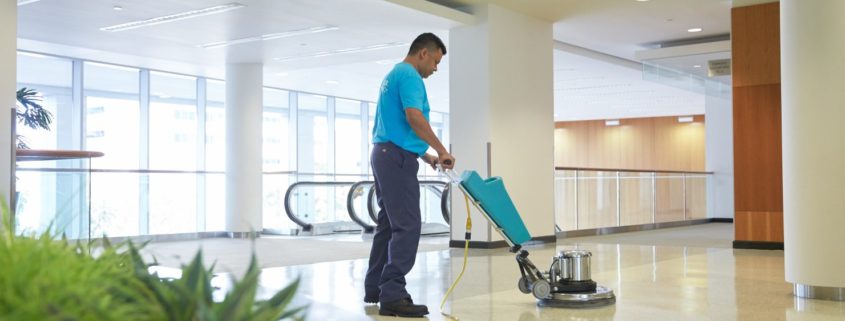
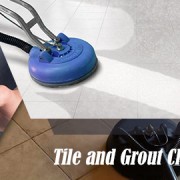
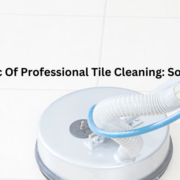
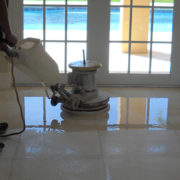
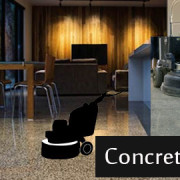


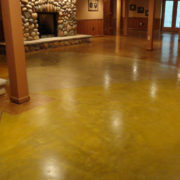
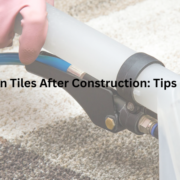
 Address:
Address:  Phone:
Phone:  ABN: 63 602 512 489
ABN: 63 602 512 489




